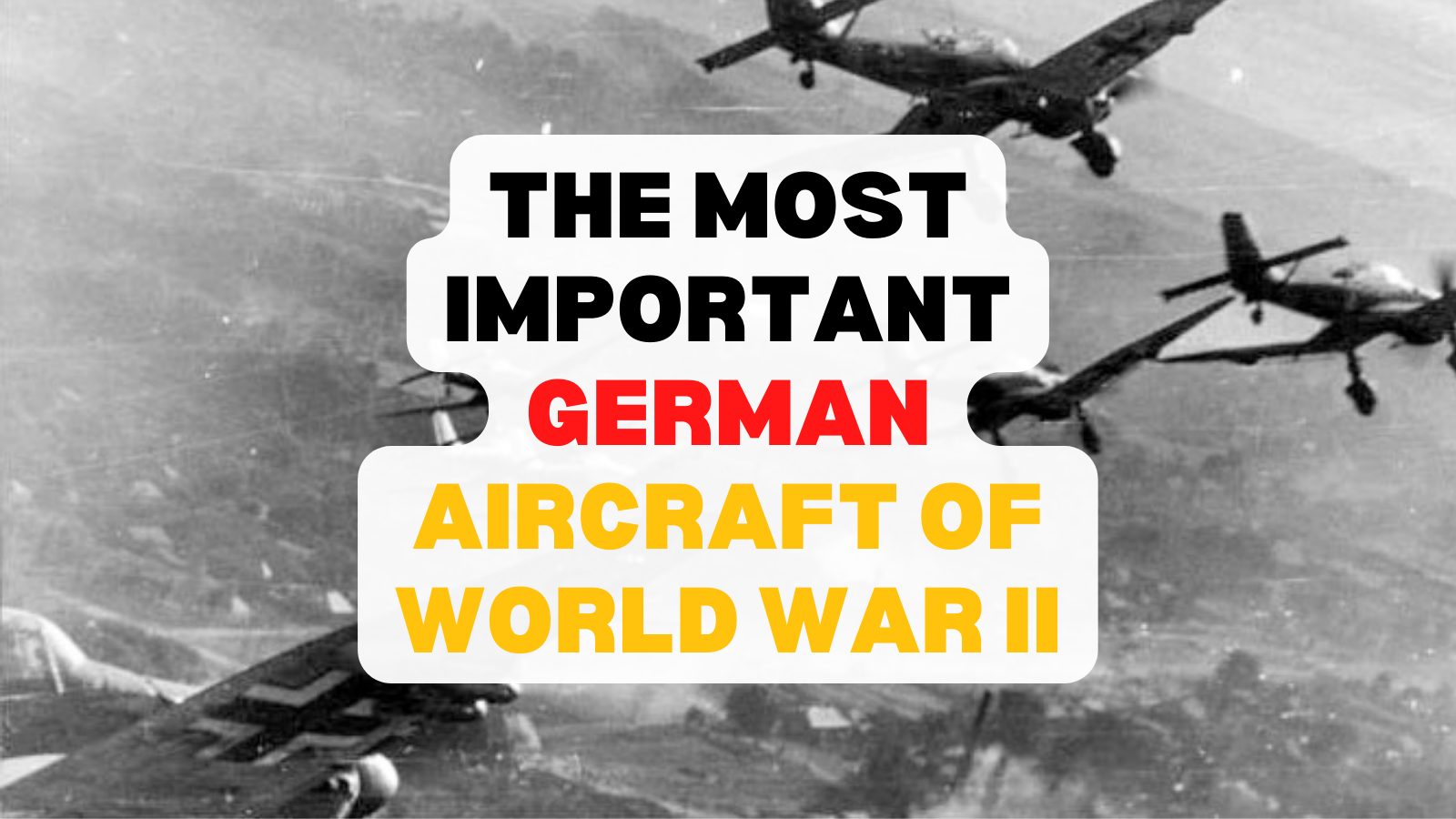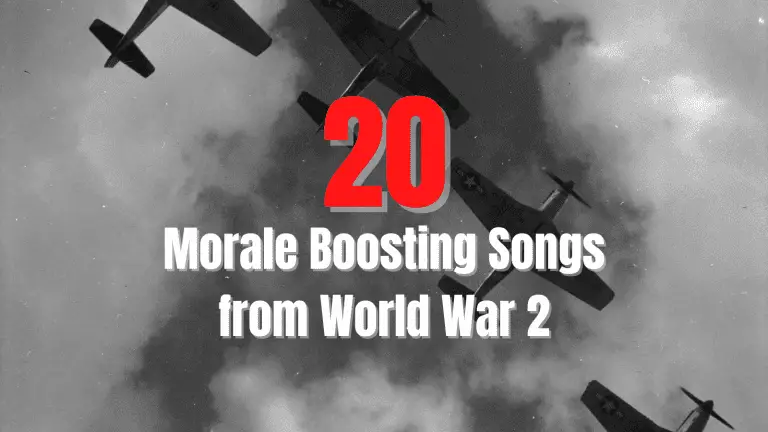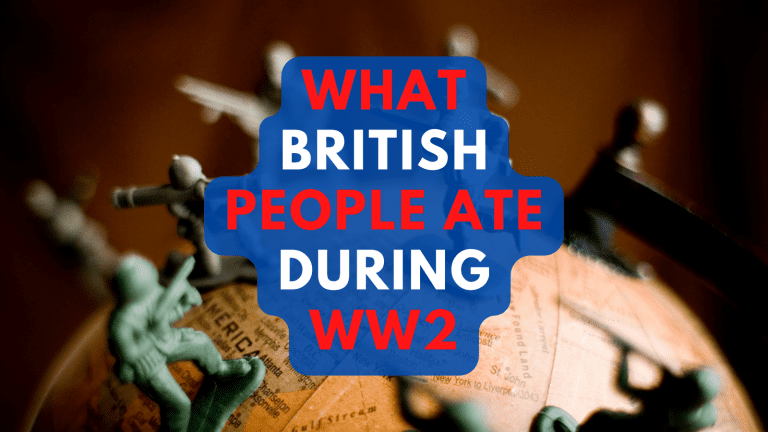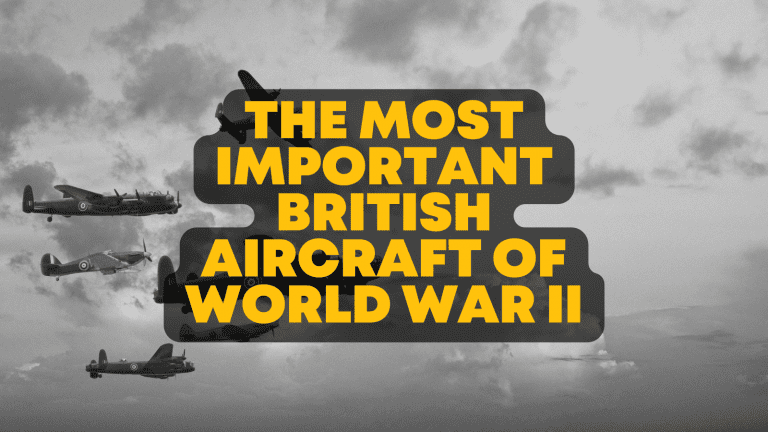The Most Important German Aircraft of World War II
The Spanish Civil War provided Hitler with the ideal opportunity to test his aircraft, develop tactics and strategies. Volunteers were recruited in secret to not draw attention to a potential breach of the non-intervention pact agreed by Germany at the end of the First World War. The Condor Legion was created in Melilla on the Morocco-Spain border in 1936. Consisting of four bomber squadrons, four fighter squadrons, anti-aircraft, and anti-tank support, more than 19,000 German airmen gained valuable combat experience in its duration.
The Legion started its service supporting Nationalist (and Italian) units during the Battle of Madrid in November 1936. The Republicans fought off the attack, but German Command noted with interest the effects of aerial attacks on civilian targets. Heinkel He-52s and Junkers Ju-52 were utilised at another defeat, the Battle of Jarama, during which Soviet fighters outclassed the Legion’s aircraft.
Early in 1937, the Legion eagerly accepted new aircraft, including the Dornier Do-17 and Heinkel He-111 bombers, the Henschel Hs-123 dive bomber, and Heinkel He-112 and Messerschmitt Bf-109 fighters and put these to use in a devastating attack on the town of Durango during the war in the North.
On 26 April 1937, the Legion made a controversial attack on the Basque city of Guernica with waves of Ju-52 and He-111 bombers. The Basques reported more than 2,000 casualties, and the world became uneasy, having seen the might of the Luftwaffe’s new warplanes and the duplicity of ‘neutral’ Nazi Germany. There was little time for deliberation; in July 1937, the Legion made a devastating attack at the Battle of Brunete. He-111 bombers sought vital targets, with Bf109s providing cover from above and He-51 biplanes strafing the Republican land forces below.
The Legion continued making raids, especially on Barcelona, and participated in the Battle of Teruel and the offensive on Aragon. Still, as the Nationalist advance slowed and there were disputes over Franco’s debt to Germany for its contribution to his cause, Hitler’s attention turned to Czechoslovakia. The Legion’s last decisive action was at the Battle of the Ebro. Some German aircraft continued to support the Republican Air Force, but the bulk was directed elsewhere.
Following his successful occupation of Czechoslovakia, Hitler started his invasion of Poland, which was to escalate into the Second World War, on 1 September 1939 and the Luftwaffe played a vital role from the outset. Although skilled, highly trained pilots staffed the Polish Air Force, their fighters were outdated and performed poorly against the aggressors. It was an uneven fight; Hitler had almost 4,000 aircraft at his disposal, whereas the Poles had fewer than 300.
After receiving intelligence concerning Hitler’s plans, Polish Air Force squadrons were mobilised to secret locations throughout the country and prepared to make stinging attacks on enemy tanks and aircraft.
The invasion began with the Luftwaffe deploying dive bombers for ground support while bombers attacked cities, transport, and military targets. The Polish fighters shot down 126 enemy aircraft and continued fighting for three weeks despite overwhelming odds. Then as Warsaw fell, many Polish pilots managed to escape to Britain and served in the RAF, and proved themselves a menacing force in the Battle of Britain and other air conflicts.
Nazi propaganda stated the Polish Air Force had been destroyed in three days, and though the claim was untrue and unfair, it cemented the view that the Luftwaffe, the most experienced, best equipped, and best trained Air Force in the world, was also the most feared.
So which were the most important German aircraft of World War 2?
[/et_pb_text][/et_pb_column][/et_pb_row][et_pb_row _builder_version=”4.14.8″ _module_preset=”default” global_colors_info=”{}”][et_pb_column type=”4_4″ _builder_version=”4.14.8″ _module_preset=”default” global_colors_info=”{}”][et_pb_text _builder_version=”4.14.8″ _module_preset=”default” global_colors_info=”{}”]Messerschmitt Bf-109 Fighter
[/et_pb_text][/et_pb_column][/et_pb_row][et_pb_row _builder_version=”4.14.8″ _module_preset=”default” global_colors_info=”{}”][et_pb_column type=”4_4″ _builder_version=”4.14.8″ _module_preset=”default” global_colors_info=”{}”][et_pb_text _builder_version=”4.14.8″ _module_preset=”default” global_colors_info=”{}”]Maximum speed: 520km/h
Range 800 x 1,144km
Armament
2 x 13mm synchronised MG131 machine guns
1 x 20mm MG151/20 cannon or 30mm MK1108 as centreline Motorkanone
2 x 20mm MG 151/20 underwing cannon
Willy Messerschmitt’s single-seated, single-engine 109 was introduced in 1933 and became the most produced fighter plane in history with 33,984 airframes produced during Göring’s command of the Luftwaffe.
First flown in public at the Berlin Olympic Games of 1936, it demonstrated extraordinary maneuverability and exceptional speed.
By 1940, the 109 was in mass production and proved a formidable opponent for the Spitfire in the Battle of Britain. The Spitfire was more maneuverable and a little faster, but the 109 performed better at altitude. The 109’s fuel capacity limited its fighting time, and many were lost in the Channel on their return.
Modifications gave 109s new roles intercepting Allied bombers, reconnaissance, bomber escort, ground attack, and all-weather, day and night fighting on the Eastern Front and throughout Europe.
[/et_pb_text][/et_pb_column][/et_pb_row][et_pb_row _builder_version=”4.14.8″ _module_preset=”default” global_colors_info=”{}”][et_pb_column type=”4_4″ _builder_version=”4.14.8″ _module_preset=”default” global_colors_info=”{}”][et_pb_text _builder_version=”4.14.8″ _module_preset=”default” global_colors_info=”{}”]Focke-Wolf fw-190 Fighter Bomber
[/et_pb_text][/et_pb_column][/et_pb_row][et_pb_row _builder_version=”4.14.8″ _module_preset=”default” global_colors_info=”{}”][et_pb_column type=”4_4″ _builder_version=”4.14.8″ _module_preset=”default” global_colors_info=”{}”][et_pb_text _builder_version=”4.14.8″ _module_preset=”default” global_colors_info=”{}”]Maximum speed: 652 km/h
Range: 900-1,000 km
Armament
2 x 13mm synchronised MG131 machine guns
2 x 20mm MG 151/20E wing- root mounted cannons
2 x 20mm MG 151/ 20E mid- wing-mounted cannons
1 bomb under the fuselage or four under wings
This single-seat, single-engine multi-role aircraft began operational service with the Luftwaffe in Autumn 1941, initially to complement the 109. It provided increased firepower and better maneuverability at low to medium altitudes.
The 190 proved an outstanding fighter against the RAF. It was a dangerous interceptor in North Africa and was particularly deadly for Allied aircraft making large daylight bombing raids over Europe in 1943. It was widely used in Normandy in 1944, notably by the outstanding airmen of Jagdgeschwader 26, the ‘Abbeville Boys’.
The following January, 490 Fw-190s saw action in Operation Bodenplatte, the Luftwaffe’s mission to gain air supremacy at the Battle of the Bulge. Ultimately, this failed, and 40% of these aircraft were lost.
[/et_pb_text][/et_pb_column][/et_pb_row][et_pb_row _builder_version=”4.14.8″ _module_preset=”default” global_colors_info=”{}”][et_pb_column type=”4_4″ _builder_version=”4.14.8″ _module_preset=”default” global_colors_info=”{}”][et_pb_text _builder_version=”4.14.8″ _module_preset=”default” global_colors_info=”{}”]Junkers Ju-52 transport
[/et_pb_text][/et_pb_column][/et_pb_row][et_pb_row _builder_version=”4.14.8″ _module_preset=”default” column_structure=”1_5,3_5,1_5″][et_pb_column _builder_version=”4.14.8″ _module_preset=”default” type=”1_5″][/et_pb_column][et_pb_column _builder_version=”4.14.8″ _module_preset=”default” type=”3_5″][et_pb_image src=”http://historywithhenry.com/wp-content/uploads/2022/03/1-4.jpg” _builder_version=”4.14.8″ _module_preset=”default” alt=”The Most Important German Aircraft of World War II” title_text=”1″ hover_enabled=”0″ sticky_enabled=”0″][/et_pb_image][/et_pb_column][et_pb_column _builder_version=”4.14.8″ _module_preset=”default” type=”1_5″][/et_pb_column][/et_pb_row][et_pb_row _builder_version=”4.14.8″ _module_preset=”default” global_colors_info=”{}”][et_pb_column type=”4_4″ _builder_version=”4.14.8″ _module_preset=”default” global_colors_info=”{}”][et_pb_text _builder_version=”4.14.8″ _module_preset=”default” global_colors_info=”{}”]Maximum speed: 265.5 km/h
Range: 998 km
Armament:
1 x 7.92mm machine gun in dorsal position
1 x 7.92mm semi-retractable dustbin turret machine gun
Up to 500kg of bombs
This versatile three-engined passenger carrier participated in every German campaign in World War II. It was designed in 1930 as an airliner but was modified as a wartime bomber and troop transporter. It was also utilised as a glider tug and an air ambulance.
Perhaps its finest hour was the invasion of Crete in 1941; 530 Ju-52s delivered paratroops for the offensive. It was used extensively, though not as successfully, in the Battle of Stalingrad.
Approximately 4,800 had been built by the end of 1944; the later models boasted more powerful engines, a greater load capacity, and interchangeable landing wheels, floats, or skis.
[/et_pb_text][/et_pb_column][/et_pb_row][et_pb_row _builder_version=”4.14.8″ _module_preset=”default” global_colors_info=”{}”][et_pb_column type=”4_4″ _builder_version=”4.14.8″ _module_preset=”default” global_colors_info=”{}”][et_pb_text _builder_version=”4.14.8″ _module_preset=”default” global_colors_info=”{}”]Dornier Do-17 Light Bomber
[/et_pb_text][/et_pb_column][/et_pb_row][et_pb_row _builder_version=”4.14.8″ _module_preset=”default” global_colors_info=”{}”][et_pb_column type=”4_4″ _builder_version=”4.14.8″ _module_preset=”default” global_colors_info=”{}”][et_pb_text _builder_version=”4.14.8″ _module_preset=”default” global_colors_info=”{}”]Maximum speed: 350 km/h
Range: 660 km
Armament:
6 x 7.92mm MG15 machine guns in front, beam, and rear positions.
1,000kg of bombs carried internally
First flown in 1935, the twin-engined Do-17 saw action in the early part of the war but as the Junkers Ju-88, with a larger bomb load and better range, went into production in 1939, the manufacture of Do-17s ended in 1940.
The following year, the Do-217, a medium bomber with a greater speed, range, and bomb load, was introduced and served throughout the remainder of the war.
[/et_pb_text][/et_pb_column][/et_pb_row][et_pb_row _builder_version=”4.14.8″ _module_preset=”default” global_colors_info=”{}”][et_pb_column type=”4_4″ _builder_version=”4.14.8″ _module_preset=”default” global_colors_info=”{}”][et_pb_text _builder_version=”4.14.8″ _module_preset=”default” global_colors_info=”{}”]Heinkel He-111 Medium Bomber
[/et_pb_text][/et_pb_column][/et_pb_row][et_pb_row _builder_version=”4.14.8″ _module_preset=”default” column_structure=”1_5,3_5,1_5″][et_pb_column _builder_version=”4.14.8″ _module_preset=”default” type=”1_5″][/et_pb_column][et_pb_column _builder_version=”4.14.8″ _module_preset=”default” type=”3_5″][et_pb_image src=”http://historywithhenry.com/wp-content/uploads/2022/03/2-4.jpg” _builder_version=”4.14.8″ _module_preset=”default” alt=”The Most Important German Aircraft of World War II” title_text=”2″ hover_enabled=”0″ sticky_enabled=”0″][/et_pb_image][/et_pb_column][et_pb_column _builder_version=”4.14.8″ _module_preset=”default” type=”1_5″][/et_pb_column][/et_pb_row][et_pb_row _builder_version=”4.14.8″ _module_preset=”default” global_colors_info=”{}”][et_pb_column type=”4_4″ _builder_version=”4.14.8″ _module_preset=”default” global_colors_info=”{}”][et_pb_text _builder_version=”4.14.8″ _module_preset=”default” global_colors_info=”{}”]Maximum speed: 440km/h
Range 2,300km
Armament:
1 x 20mm MG FF forward cannon
1 x 13mm MG 131 dorsal machine gun
2,000 kg of bombs carried internally
Up to 3,600 kg of bombs could be carried on external bomb racks.
Originally a civil airliner, the He-111 was a vital support to Hitler’s ground forces in the Spanish Civil War and then in Europe to become the most important German bomber throughout the Second World War.
With more than 7,000 manufactured, various modified 111s were produced, including a paratroop carrier for transporting a stick of sixteen men and two 800kg supply containers.
[/et_pb_text][/et_pb_column][/et_pb_row][et_pb_row _builder_version=”4.14.8″ _module_preset=”default” global_colors_info=”{}”][et_pb_column type=”4_4″ _builder_version=”4.14.8″ _module_preset=”default” global_colors_info=”{}”][et_pb_text _builder_version=”4.14.8″ _module_preset=”default” global_colors_info=”{}”]Junkers 87 Stuka Dive Bomber
[/et_pb_text][/et_pb_column][/et_pb_row][et_pb_row _builder_version=”4.14.8″ _module_preset=”default” global_colors_info=”{}”][et_pb_column type=”4_4″ _builder_version=”4.14.8″ _module_preset=”default” global_colors_info=”{}”][et_pb_text _builder_version=”4.14.8″ _module_preset=”default” global_colors_info=”{}”]Maximum speed: 339.6 km/h
Range: 595.5 km
Armament:
2 x 7.92mm MG17 forward machine guns
1 x 7.92mm MG15 rear machine gun
1 x 250kg bomb beneath fuselage
4 x 50kg bombs underwing
The Stuka became one of the most recognised and feared German aircraft in the Second World War due to its terrifying dive-activated siren, the ‘Jericho trumpet’. It was introduced in 1936 against Spanish Republican forces and was used in Poland, the Low Countries, and Norway. However, it was not a success in the Battle of Britain due to its lack of speed, poor maneuverability, and limited weaponry.
It was more successful in operations in the Balkans, North Africa, and Eastern Front and remained in production until 1944. By then, nearly 6,500 Stukas had been manufactured.
[/et_pb_text][/et_pb_column][/et_pb_row][et_pb_row _builder_version=”4.14.8″ _module_preset=”default” global_colors_info=”{}”][et_pb_column type=”4_4″ _builder_version=”4.14.8″ _module_preset=”default” global_colors_info=”{}”][et_pb_text _builder_version=”4.14.8″ _module_preset=”default” global_colors_info=”{}”]Messerschmitt Me-262 Jet Fighter
[/et_pb_text][/et_pb_column][/et_pb_row][et_pb_row _builder_version=”4.14.8″ _module_preset=”default” global_colors_info=”{}”][et_pb_column type=”4_4″ _builder_version=”4.14.8″ _module_preset=”default” global_colors_info=”{}”][et_pb_text _builder_version=”4.14.8″ _module_preset=”default” global_colors_info=”{}”]Maximum speed: 900 km/h
Range: 1,050 km
Armament:
4 x 30mm MK 108 cannon
24 x 55mm R4M rockets
2 x 250kg or 2 x 500kg bombs
The ‘wonder weapon’ Me-262 was the first jet-powered fighter, faster and more heavily armed than any Allied warplane. It was introduced in 1944, after four years of design and development, but this late arrival severely limited the impact it could have had. Herman Göring was convinced the allied daytime bombing offensive could have been very different had he had access to 300 operational 262s.
And one final “strange” addition to this list…
[/et_pb_text][/et_pb_column][/et_pb_row][et_pb_row _builder_version=”4.14.8″ _module_preset=”default” global_colors_info=”{}”][et_pb_column type=”4_4″ _builder_version=”4.14.8″ _module_preset=”default” global_colors_info=”{}”][et_pb_text _builder_version=”4.14.8″ _module_preset=”default” global_colors_info=”{}”]Fieseler Fi-156 Storch Liaison aircraft
[/et_pb_text][/et_pb_column][/et_pb_row][et_pb_row _builder_version=”4.14.8″ _module_preset=”default” column_structure=”1_5,3_5,1_5″][et_pb_column _builder_version=”4.14.8″ _module_preset=”default” type=”1_5″][/et_pb_column][et_pb_column _builder_version=”4.14.8″ _module_preset=”default” type=”3_5″][et_pb_image src=”http://historywithhenry.com/wp-content/uploads/2022/03/3-4.jpg” _builder_version=”4.14.8″ _module_preset=”default” alt=”The Most Important German Aircraft of World War II” title_text=”3″ hover_enabled=”0″ sticky_enabled=”0″][/et_pb_image][/et_pb_column][et_pb_column _builder_version=”4.14.8″ _module_preset=”default” type=”1_5″][/et_pb_column][/et_pb_row][et_pb_row _builder_version=”4.14.8″ _module_preset=”default” global_colors_info=”{}”][et_pb_column type=”4_4″ _builder_version=”4.14.8″ _module_preset=”default” global_colors_info=”{}”][et_pb_text _builder_version=”4.14.8″ _module_preset=”default” global_colors_info=”{}”]Maximum speed: 175 km/h
Range: 390 km
Armament :
1 x MG 15 machine gun
The Storch (German for stork) was designed in response to a Luftwaffe request for a light, short-range reconnaissance aircraft. It had short take-off and landing capabilities (STOL) ahead of its time and was a part of the German war machine wherever It operated. Production exceeded 2,500 aircraft.
The Storch was famously used to rescue Mussolini in the Gran Sasso raid of 1943 and was rumoured to have assisted Hitler’s escape from his Berlin bunker at the end of the war in some conspiracy theories.
[/et_pb_text][/et_pb_column][/et_pb_row][/et_pb_section]






